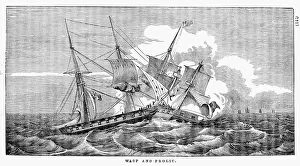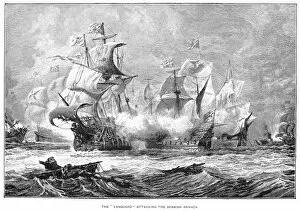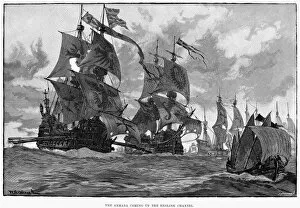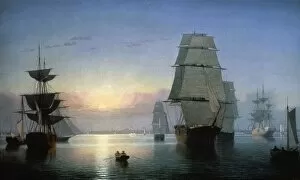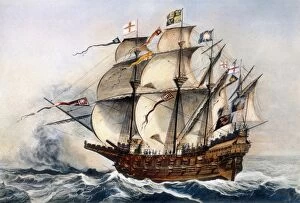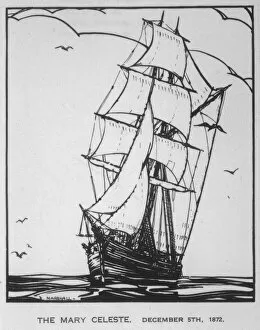Brigantine Collection (#2)
"The Brigantine: A Journey Through History and Art" The Brigantine, a type of sailing vessel, has left an indelible mark on history and art
For sale as Licensed Images
Choose your image, Select your licence and Download the media
"The Brigantine: A Journey Through History and Art" The Brigantine, a type of sailing vessel, has left an indelible mark on history and art. From its role in the famous voyage of the HMS Beagle to its depiction in various paintings and engravings, this versatile ship has captured the imagination of many. In 1831, Charles Darwin embarked on his groundbreaking expedition aboard the HMS Beagle as ships naturalist. The brigantine served as his floating laboratory, carrying him through uncharted waters and inspiring his revolutionary theories. One notable artistic representation is Andreas Weide's model of a brigantine from 1881. This intricately crafted piece showcases the beauty and craftsmanship that went into building these vessels. But the story of brigantines goes back even further. Diego Velazquez de Cuellar, a Spanish conquistador who lived during the late 15th century, was known for commanding a brigantine during his adventures in the New World. During the Greek War of Independence from 1821 to 1832, brigantines played a crucial role in battles such as "The Battle of" where they showcased their agility and firepower. Not only were they used for warfare but also for exploration. Henry VIII's warship was one such example - it carried out expeditions across treacherous seas with great success. Brigantines also had their fair share of heroic moments at sea. "The Brigantine Tom Cod rescuing the crew of La Plata" depicts a dramatic scene where brave sailors risked their lives to save others stranded at sea. Even life-saving missions were associated with these magnificent ships. "The Rhyl Life-Boat saving the Crew" shows how a brigantine came to rescue sailors caught in perilous situations off Pansern Abergele. Throughout history, artists have been captivated by these vessels' grandeur.

